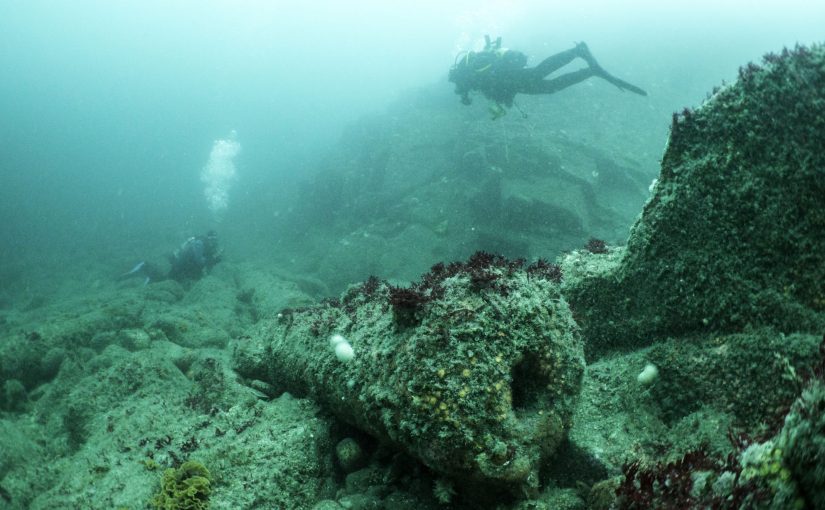Menu: 3D Site Plan | Dive Video | Site Detail
Loss
In 1707 Admiral Sir Cloudesley Shovell was returning to England from the Mediterranean with his fleet of 21 ships, when disaster struck. They had miscalculated their position and ran onto the Western Rocks in Scilly on the night of 22nd October. Three ships, Eagle, Romney and Sir Cloudesley’s flagship Association, were lost – with only a single survivor (from the Romney).
The fireship Phoenix struck a rock and was eventually beached at New Grimsby (Tresco), where she remained for three and a half months undergoing repairs. Another fireship — the Firebrand – also struck the rocks but managed to get off again. Leaking badly, she made for the beacon of St Agnes lighthouse, but foundered in Smith Sound close to the island. Of Firebrand’s complement of 50 crew members, 25 — including Captain Percy — managed to reach the safety of St Agnes. About 1400 men perished in this incident, making it one of the worst disasters in British naval history. It was probably these events that led to the Longitude Act of 1714.
At the beginning of the 18th century, there was no accurate way of determining a ship’s longitude at sea. On that night in October 1707, Sir Cloudesley had miscalculated his position and ran onto the Western Rocks. The loss of a Rear Admiral of England, along with four warships and at least 1400 men, brought the question of longitude to the forefront of national affairs and precipitated the Longitude Act – and Parliament’s promise of a prize for the solution of the longitude problem. This reward – the Longitude Prize — was eventually won by John Harrison’s invention of the chronometer.
The ship
The Eagle was a 70-gun third-rate of 151 feet (46m) length, built at Portsmouth in 1679. The Eagle had a crew of about 440 under her captain, Robert Hancock.
Site history
The site was first discovered by divers working for Roland Morris in 1969. They recovered a number of artefacts including a large bronze bell marked ‘1701’ (The bell is now in the Isles of Scilly Museum). Other finds included gold and silver coins, gold rings and a navigation slate. The date of this material, and the location of the Romney shown on an early chart, led Morris to identify this site as the Romney – but the wreck is now believed to be the Eagle. Both ships were lost in the same night on the 22nd October 1707.
In 1975 the site was designated under the Protection of Wrecks Act. The statutory instrument states that ‘the wreck is believed to be that of the Romney’
Between 1975 and 1989 the site was investigated by a team led by Rex Cowan. The team surveyed the site and undertook excavation, from which a number of artefacts were recovered. Rex Cowan asserted that this was the wreck of the Eagle, rather than the Romney as previously thought
The original identification of the wreck as the Romney, made by Roland Morris in 1969, was based on recovered artefact dates and a chart drawn shortly after 1707 by Edmund Gostelo This shows the Romney on or about the Tearing Ledge (recorded as ‘Rumney Lost’). This chart also shows the Eagle wrecked on the Crim, an area of rocks some 3.2km to the north of the Tearing Ledge. However, the number of guns surviving on the seabed suggests a ship larger than the Romney. The survey of the guns undertaken by Peter McBride for Rex Cowan has identified guns which are consistent with the known armament of the Eagle, but are too large for the Romney. Finally, amongst the artefacts recovered by Rex Cowan’s diving team was a silver spoon marked with the initials ‘HRM’ (with the H over the RM). This object can be attributed to the Captain of the Eagle, given the 17th century practice of placing husband and wife’s first initial under the surname initial on cutlery: Captain Robert Hancock and his wife Mary
The site
The Tearing Ledge is a rock pinnacle which breaks surface at low tide. It is situated some 350m to the south-east of the Bishop Rock lighthouse in the Isles of Scilly. Underwater, the Tearing Ledge is surrounded by very large rock gullies with some patches of sandy sediment. The site is largely free from kelp but is subject to very strong tides and swell-generated surge

What survives on the seabed now are two large iron anchors, over 60 iron guns and a number of iron objects, including iron shot. To date, no evidence of ship’s structure has been located.
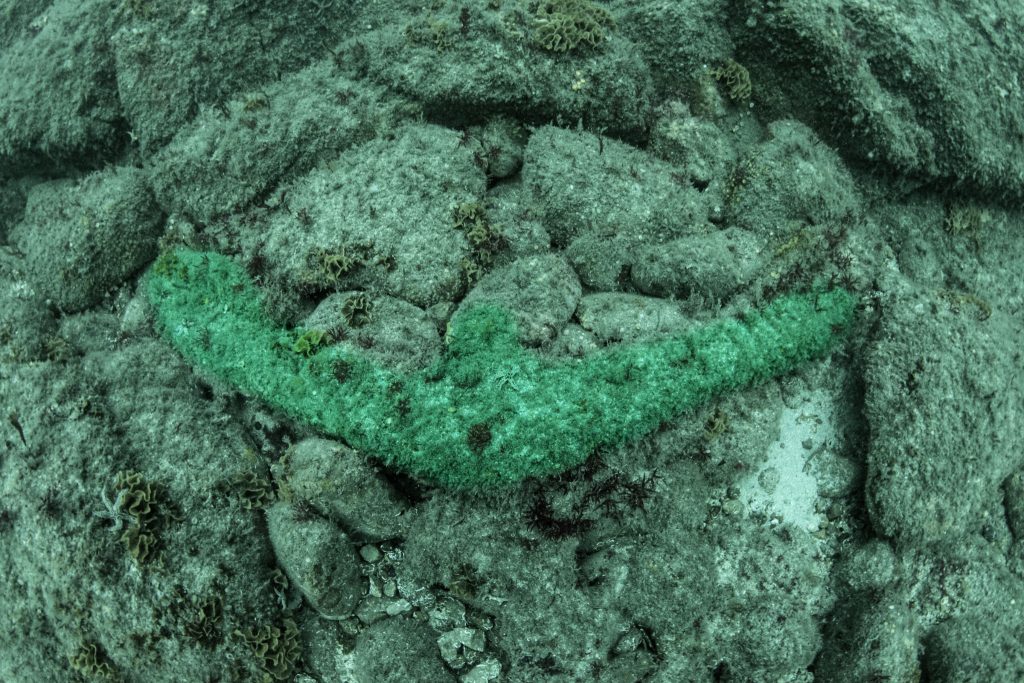
Aesthetically, Tearing Ledge is one of the most memorable wreck sites a diver will ever encounter. After their visit in 1986, the ADU observed that ‘The wreck lies within what must be some of the most spectacular submarine topography in the British Isles’.
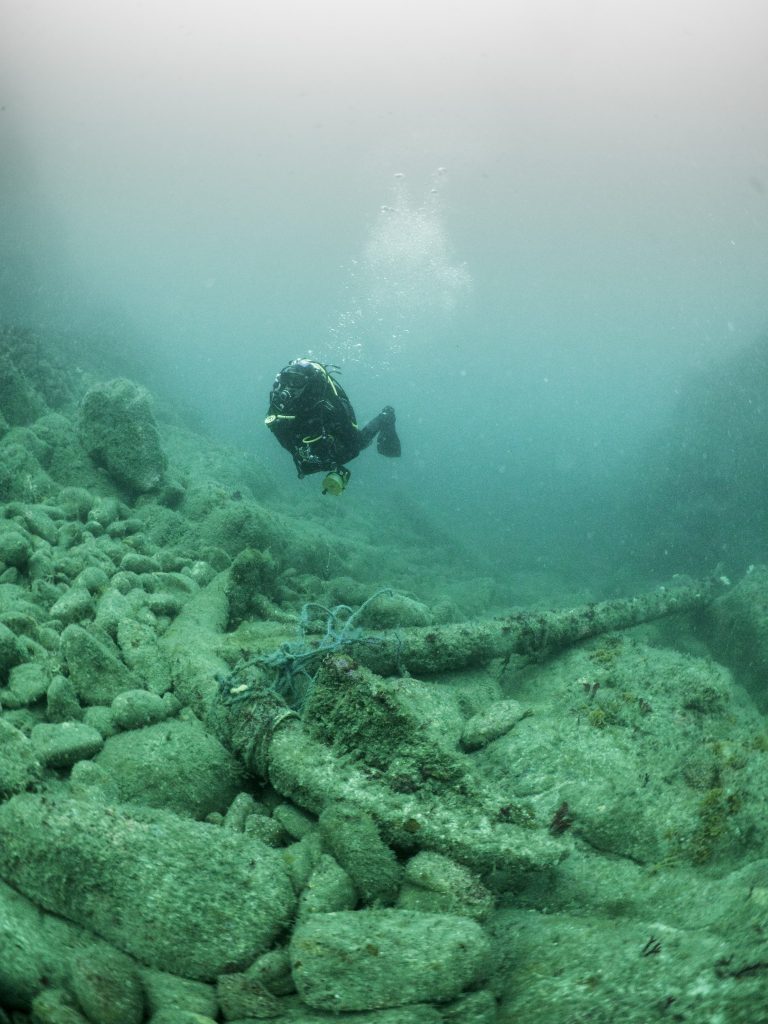
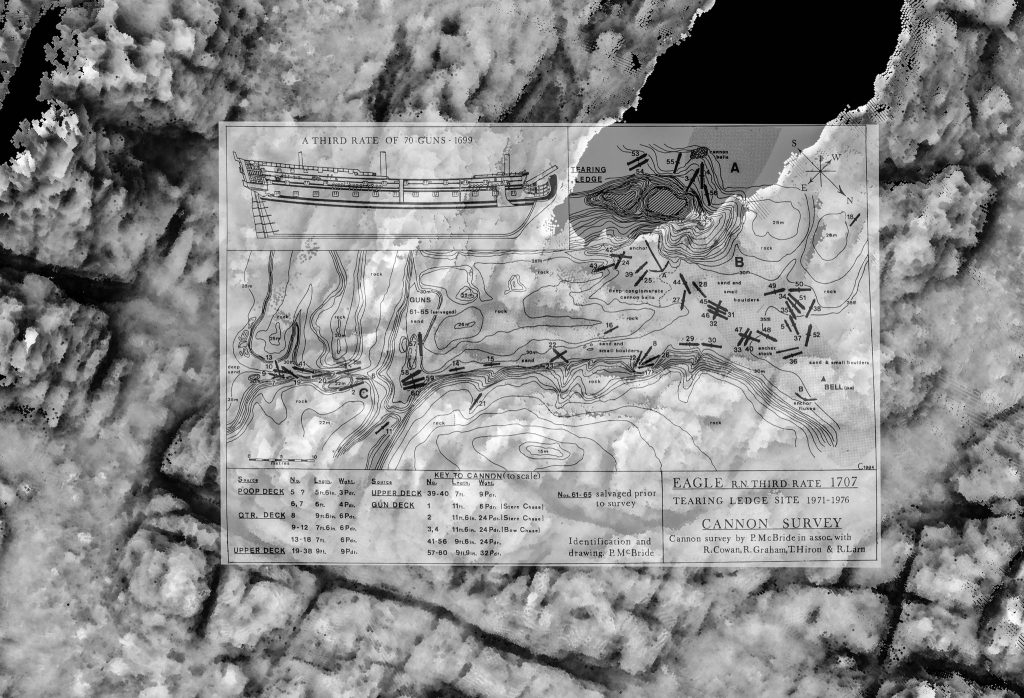
Access to the site
Public access to the site is achieved by licence under the Protection of Wrecks Act. This licensing is currently administered by Historic England. The three dive charter boats operating in Scilly have annual licences to visit the protected wreck sites.
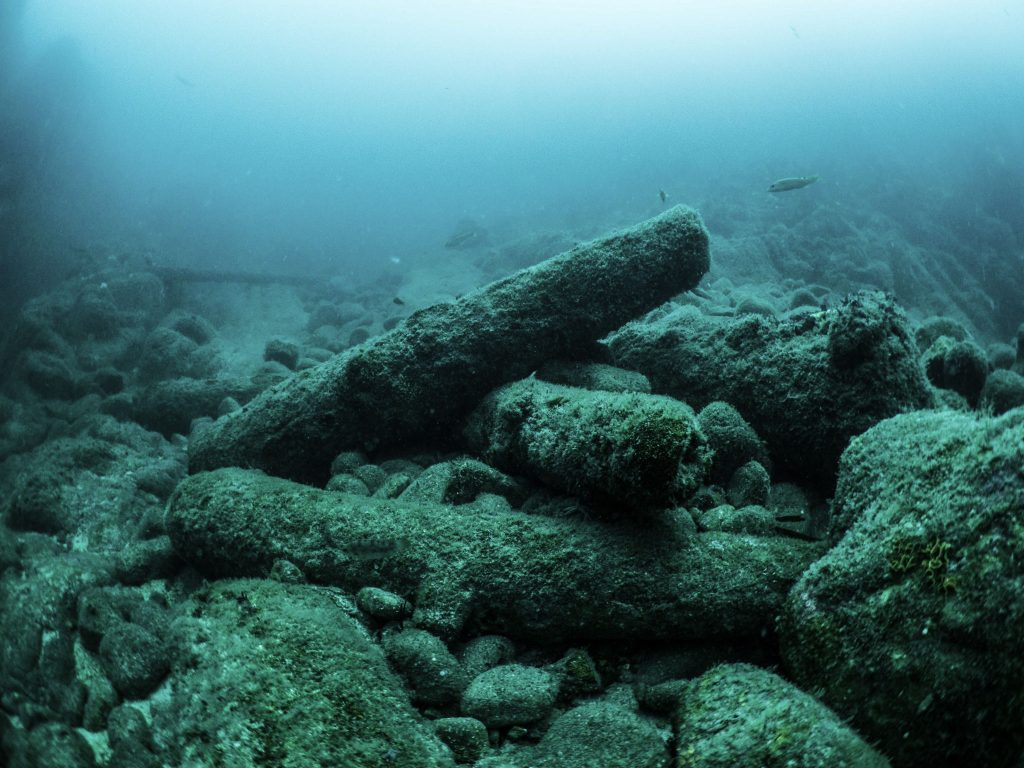
Finds
The bronze bell recovered by Roland Morris in 1969 is now on display in the Isles of Scilly Museum.
Historic England list entry
If you would like to find out more, view the Historic England list entry for Tearing Ledge.
